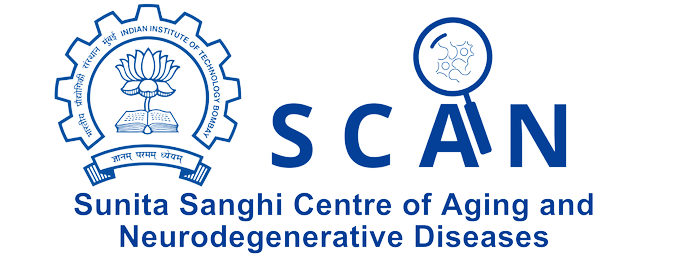
Parkinson’s Disease
Parkinson’s disease (PD) is the second most prevalent age-related neurodegenerative disorder. It results primarily due to the irreversible loss of dopamine-producing (dopaminergic) neurons in the substantia nigra, a mid-brain region essential for muscle tone and movement regulation. Epidemiological data indicate that PD is the fastest-growing neurodegenerative disorder and is expected to double (~13 million) by the year 2040. This highlights the urgent need to focus on developing early diagnostic approaches and novel preventive as well as therapeutic strategies.



Pathology
Macroscopically, the brain of idiopathic PD patients exhibits a normal structure, albeit one associated with mild frontal cortex atrophy and ventricular dilation in certain cases. The major morphological change in the brain of patients suffering from PD is the loss of the dark-pigmented region of the substantia nigra pars compacta (SNpc) due to the degeneration of a specific group of neuromelanin-containing dopamine-producing neurons. However, at the microscopic level, the defining neuropathological hallmark of PD is the presence of proteinaceous intraneuronal cytoplasmic inclusions, namely Lewy bodies (LBs) and Lewy neurites (LNs), in the brain. These LBs and LNs are highly organized structures composed of aggregated forms of alpha-synuclein (α-Syn) along with other proteins, lipids, and membranous organelles.



Signs & Symptoms
The symptoms of PD grow insidiously and tend to increase in severity over time, with substantial individual variability. PD is clinically defined by four cardinal motor symptoms, including tremors, muscular rigidity, bradykinesia, and postural instability. Based on these cardinal features, several international PD societies have developed their clinical rating scales to assess the severity of the disease, including multiple inclusion and exclusion criteria. Advanced PD patients may experience behavioral changes, cognitive impairments (depression, impulse control disorders, memory difficulties), and altered cardiovascular function.



Risk Factors
PD is a complex, multifactorial disorder. Approximately 90% of the cases are sporadic, and the exact pathogenic mechanism is unknown. However, a small proportion (10–15%) of the cases have a specific hereditary background. The discovery of point mutations in the SNCA gene, which codes for the protein α-Syn, suggested a direct genetic link for PD.
Apart from SNCA, mutations in leucine-rich repeat kinase 2 (LRRK2), Parkin (PARK2), PINK1 (PARK6), DJ-1 (PARK7), and ATP13A2 (PARK9) are common monogenic forms of PD that exhibit an autosomal dominant or recessive mode of inheritance. Further, several epidemiological studies have demonstrated a close interplay of both genetic and non-genetic environmental factors (e.g., exposure to pesticides, toxicants, heavy metals, drug molecules, etc.) in PD pathogenesis, which may enhance the susceptibility to the onset of the disease as well as its progression.



Diagnosis & Cure
Since there is no specific and sensitive laboratory test available to diagnose PD, patients, in general, are diagnosed with PD based on their symptoms, medical history, and physical examination. The first clinical symptoms of PD may not even appear until neuronal damage exceeds 70% in patients. This makes it extremely difficult to manage the disease. As of now, the initial degeneration of dopaminergic neurons in patients at the pre-symptomatic stage of the disease cannot be detected by the available neuroimaging techniques such as PET, SPECT, and MRI scans. However, some neurologists may advise patients to have a PET scan along with some specific blood tests to rule out other diseases that probably cause overlapping symptoms.
Due to the multifactorial nature of the disorder and the complexity of the disease mechanism, there is currently no complete cure or effective disease-modifying therapy for PD. The available treatment strategies for PD are mostly symptomatic. The most effective FDA-approved drug for PD treatment is the daily administration of levodopa or carbidopa to increase synaptic dopamine levels. Apart from levodopa, other conventional drug molecules such as monoamine oxidase inhibitors, dopamine agonists, etc. are recommended to combat motor symptoms. Along with dopamine precursors, there are FDA-approved specific drug molecules that are used for non-motor symptoms as well.
Surgical intervention strategies, including “deep brain stimulation,” are also used for patients who suffer from moderate or advanced stages of PD. Clinical experts may often recommend physical therapy, speech therapy, and lifestyle modifications to improve their quality of life. Therefore, the availability of early diagnostic tools and developing neuroprotective or disease-modifying therapies for PD would be of utmost importance for the prognosis and timely management of the disease.


